Nowhere else in Asia does the ancient blend with the modern quite like it does in Cambodia’s capital, Phnom Penh. I arrived at the riverside on a Sunday night in a tuk-tuk—a distinctly Southeast Asian vehicle. The last time I rode in a Cambodian tuk-tuk, it was a belching, hissing, three-wheeled pollution factory. This was a clean, green, electric transport machine! And, instead of standing in the rain to flag one down, I summoned it with a few taps on my smartphone.
It’s been over twenty years since I last visited this city. It feels utterly transformed, yet somehow exactly the same.
Skyscrapers shimmer in the distance, reflecting the radiance of the Royal Palace, lit up like a giant golden spaceship. French colonial mansions glow in the ethereal light emanating from the Independence Monument that celebrates the end of their era. Sputtering motorbikes and pedal-powered “cyclos” weave in and out of slowly creeping streams of SUVs and luxury sedans, all heading to their destinations in this buzzing beehive of three million people.
Lounging at a chic rooftop bar, I watch the ferry boats unloading passengers along the riverside. Hundreds of people join the thousands already meandering up and down the promenade at the walking street party that occurs every weekend along the banks of the Mekong. They come to sing, dance, eat, and eat some more.
I feel strangely connected to it all. Families, teenagers, young lovers sharing a rapidly melting ice cream cone, and me—the newly arrived tourist—sipping a frosty Hanuman draught beer and munching on salty peanuts roasted with kaffir lime leaves.
The World’s Best Retirement Havens for 2026
The World’s Best Retirement Havens for 2026
24 Countries Compared, Contrasted, Ranked, and Rated. You don’t have to be rich to enjoy a pampered retirement, you just need to know where to go. With our 35th Annual Global Retirement Index, our experts hand you a detailed roadmap. Details—and a Special Offer—Here

By submitting your email address, you will receive a free subscription to IL Postcards, Overseas Dream Home, The Untourist Daily and special offers from International Living and our affiliates. You can unsubscribe at any time, and we encourage you to read more about our Privacy Policy.
Colonial Comfort at the White Mansion
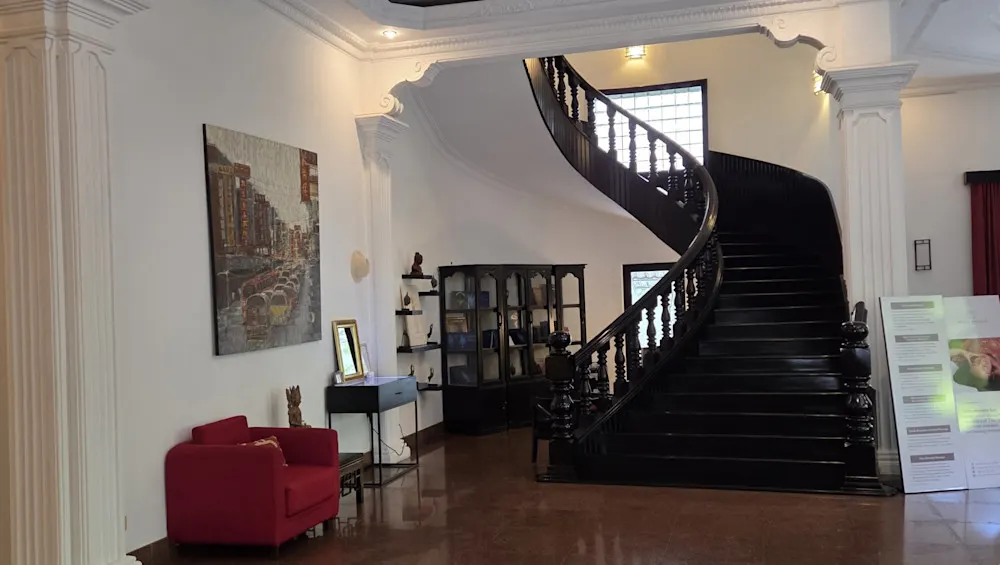
The hotel where I checked in is also a throwback to a bygone era. The White Mansion was once the residence of the US Embassy before it was converted into a boutique hotel in 2012. The ornate crown molding, dramatic staircases, and red marble floors reflect the opulence and grandeur of the colonial era. It’s low tourist season, so the ever-so-accommodating manager upgraded me to a suite with a massive balcony shaded by frangipani trees overlooking Street 240. I can imagine foreign dignitaries commiserating over gin and tonics on this balcony while discussing the issues of the day and complaining about the sweltering heat.
The staff are embarrassingly courteous, and it took me a few days to get used to all the stepping and fetching. However, I immediately grew accustomed to the excellent breakfasts served at Le Café at the White Mansion. Because Cambodia is a former French colony, Fresh bread and croissants are everywhere, so you can indulge in all the carbs you can handle. I go for the Khmer breakfast of sour noodle soup with shrimp instead … an authentic start to each day.
Cambodia is Not Thailand
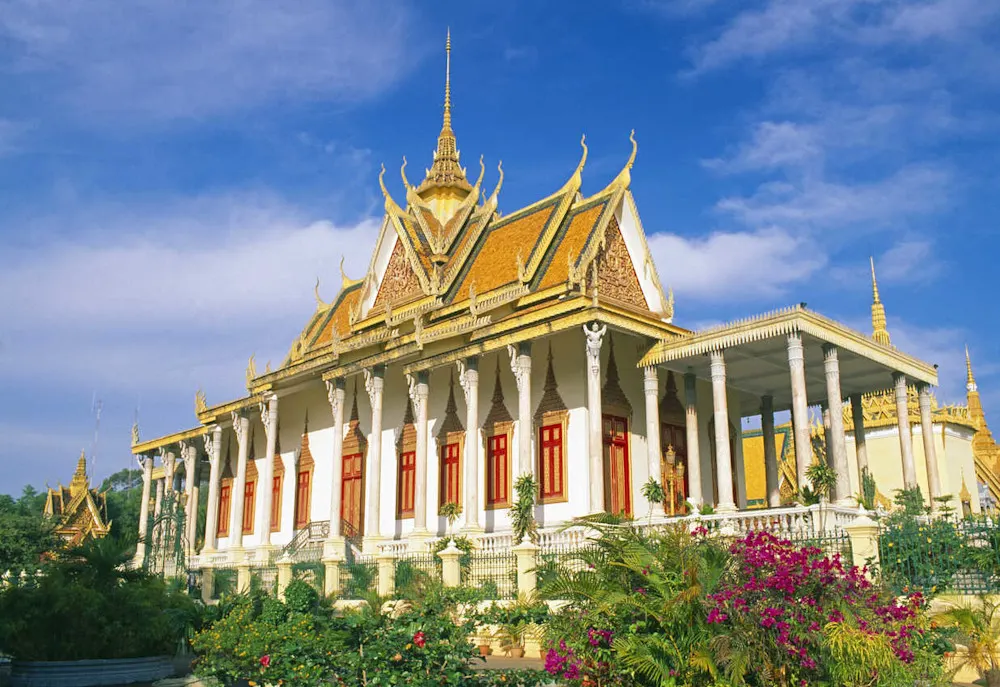
It would be easy for a Western newcomer to assume Cambodia and Thailand are similar. But, as a 25-year resident of the country next door, the first thing I noticed was … Cambodia is not Thailand. In many important ways, it isn’t even close.
To begin with, the Cambodian solution to getting around is entirely different. They drive on the right side of the road with the steering wheel on the left-hand side of the vehicle (like in the US). The traffic is more chaotic, but somehow less aggressive. Nobody is going fast; the emphasis is on keeping the flow moving. Everything you can push, pull, or drag onto the road is used. I saw pedal-powered rickshaws, motorcycle-drawn carriages called “remorques,” and thousands of ubiquitous three-wheeled “tuk-tuks”. I saw American muscle cars, beefy SUVs, and more Bentleys than I’ve seen anywhere else in the world. What I didn’t see were accidents. In Thailand, I see at least one per day. After one week in Phnom Penh, I didn’t witness a single fender-bender or mangled motorbike.
Surprisingly, the main roads are in better condition than what I’m used to in Thailand, as are the sidewalks. However, this city is not extremely walkable, as the nice flat sidewalks make for an irresistible place to park cars, motorcycles, and food stalls. If you’re going to walk, expect to weave on and off the footpaths.
There is no public transportation to speak of in Phnom Penh. There are, however, some very efficient and affordable ride-hailing services, such as Grab and Pass. I used the Grab app on my phone to hail rides on both tuk-tuks and nice cars. I never waited more than three minutes to be picked up and got to exactly where I needed to go. The average cost for a tuk-tuk was $1, and for an air-conditioned sedan was about $3.
And the $3 I paid was in actual US currency. Payment for goods and services in Cambodia is made in both USD and Cambodian Riel. It takes some getting used to, as you’ll pay with dollars and receive change in handfuls of Riel paper notes. There are no coins. The exchange rate is 4,000 Riel to 1 USD.
If you thought having a decent command of the Thai language would help in Cambodia, you’d be dead wrong. Khmer bears minimal resemblance to Thai. There are no tones, and the alphabet has 74 letters, the most of any language in the world. Fortunately, many Cambodians speak enough English to be understood, and a significant number speak it fluently, a fact I was grateful for when I ended up spending two nights in a Cambodian hospital.
Hospitalized in Phnom Penh
For two days, I ran amok in Phnom Penh, visiting The Royal Palace, The National Museum, The Tuol Sleng Genocide Museum, and a dozen other funky shops, markets, and galleries like a proper tourist. The early monsoon rains and the muggy heat kept me wet and sweaty while running in and out of overly air-conditioned venues. When I began to feel weak and feverish, I thought it was just a reaction to overexerting myself in an unfamiliar environment, so I returned to my hotel suite to rest.
The next morning, I woke up feeling like someone had beaten me with a bag of nickels. I contacted Bumrungrad International Hospital, my healthcare provider of choice in Bangkok, and asked them to recommend a doctor in Phnom Penh. After connecting with Intercare Medical Center through Facebook Messenger, I had an appointment within the hour.
This thoroughly modern international hospital turned out to be located nearby in the Boeung Keng Kang (BKK1) neighborhood. I was escorted to the twelfth floor, registered, and taken directly to an examination room, where I met Doctor Heng Leakhena, a Cambodian woman who looked young enough to be my granddaughter.
Dr. Heng greeted me in perfect English and turned her computer monitor around so I could see that she’d accessed my medical history from Bumrungrad Hospital in Bangkok. I was already impressed. After a battery of questions, a blood pressure check, and a thorough physical examination, she called in a nurse to draw blood for testing.
The nurse then led me to a quiet room to lie down while awaiting the results of my blood test. In about 45 minutes, she returned, and I was soon back in the examination room with Dr. Heng. “Please excuse the old doctor cliche,” she said. “I’ve got good news and bad news. You’ve got Dengue Fever, but from your symptoms, it doesn’t appear to be a severe case.”
It’s a mosquito-borne virus common during the rainy season. There’s no specific cure, but rest, hydration, and acetaminophen are standard treatment. Dr. Heng recommended an overnight stay for observation.
When I left the hospital, the administrative team had already contacted my insurance company and arranged for direct payment of all the tests and the private room for two nights. The total bill was less than $400.
House Shopping in Phnom Penh
I decided to stroll around the BKK1 neighborhood after waving goodbye to the smiling staff at Intercare Hospital, as it seemed like a good place to start if I were considering finding a place to live in Phnom Penh. Restaurants, coffee shops, grocery stores, and all the other amenities that you would expect in a modern city appear to be in abundant supply … especially shiny new condos and apartment towers.
I’d made arrangements to meet with Tom O’Sullivan, Director of Realestate.com.kh, the largest and most well-known real estate agency in Cambodia. Tom is an Australian who has been in Cambodia since 2013, initially in Battambang and now in Phnom Penh. We met at his office in BKK1 and chopped it up like two old Asia-hands are prone to do, comparing our experiences all over Southeast Asia.
My first question was, “Who lives here, Tom? Who makes up the expat community?”
“Phnom Penh is home to mostly working expats,” he said. “Either with multinational corporations that have operations here or with NGO-affiliated concerns. We’ve also attracted a growing group of digital nomads and remote workers, as getting a business visa and even a work permit is easy and cheap in Cambodia.”
Tom pointed out that many retirees start in Phnom Penh and ultimately opt for quieter and less chaotic locations like Siem Reap, Battambang, Sihanoukville, or Kampot. “Phnom Penh is more affordable than other big cities in the region, like Bangkok or Ho Chi Minh, but these smaller cities in Cambodia are even cheaper,” Tom added.
Tom also revealed that North Americans represent only a little over 13% of the expat population in Cambodia, with the remainder coming from Europe, the United Kingdom, Australia, and various parts of Asia.
After spending a few hours with Tom, I came away with some more real-world examples of how Cambodia differs from Thailand.
The most significant difference is the laws that govern property ownership. In Cambodia, foreigners can own up to 70% of a condominium building, provided the units are located above the ground floor. (In Thailand, the limit is 49%.)
Foreigners can facilitate owning land and houses through three different mechanisms.
Leasehold agreements can be legally made for up to 50 years and renewed for an additional 50 years (in Thailand, the term is 30 years, renewable twice).
A Cambodian land holding company can be formed with a foreigner holding 49% of the ownership, with the remaining 51% held by Cambodian citizens. Many are formed with “nominee” shareholders, which carries some risk, similar to Thailand.
A unique Cambodian approach to land ownership is through a trust company, which must be registered with the Ministry of Economy and Finance. Under this arrangement, a foreigner can own various types of real estate, including land, with the company acting as the property manager. However, the company is not authorized to sell the holdings without the consent of the foreign owner.
Tom said the Trust Law enacted in 2019 provided a mechanism for trust companies specifically for the purpose of allowing foreign investors to own land and houses.
In Phnom Penh, condo prices average about $1,800 per square meter (about $171 per square foot). A studio apartment averages about $70,000; a one-bedroom is just under $120,000; a two-bedroom is about $160,000; a sprawling three-bedroom family-style condo would average about $290,000.
The World’s Best Retirement Havens for 2026
The World’s Best Retirement Havens for 2026
24 Countries Compared, Contrasted, Ranked, and Rated. You don’t have to be rich to enjoy a pampered retirement, you just need to know where to go. With our 35th Annual Global Retirement Index, our experts hand you a detailed roadmap. Details—and a Special Offer—Here

By submitting your email address, you will receive a free subscription to IL Postcards, Overseas Dream Home, The Untourist Daily and special offers from International Living and our affiliates. You can unsubscribe at any time, and we encourage you to read more about our Privacy Policy.
Renting in Phnom Penh
Since I was primarily interested in the rental market, Tom sent me out shopping with Rith and Khim, two young Khmer agents, to see if I could find a place that suited my needs. Both of these young dudes spoke good English, so I picked their brains about the best neighborhoods for expats to live in.
“BKK1 is where most foreigners like to live,” Khim said. “That’s where the most modern and stylish buildings are, and the most Western-style shops and restaurants. It’s close to the riverside without getting into all that tourist traffic.” He also pointed out that BKK1 is the most expensive part of town, with one-bedroom rentals starting at $750 per month or more, $1,400 for a two-bedroom unit, and more than $2,500 for a large family unit.
When I asked them where expats on a budget would live, they replied in unison, “Toul Tom Poung.” “TTP is a little further away from the river near the Russian Market, and the buildings are older,” Rith said. “School teachers and digital nomads like this area because it is …” He seemed to grope for the right word in English for a moment, consulted his smartphone dictionary, and then said, “Bohemian.” According to Khim, a one-bedroom apartment in TTP could cost as low as $400, with a two-bedroom apartment costing about $800 and larger places costing $1,200 or more.
I had this romantic vision of a hip and trendy loft with a river view, so out of curiosity, we looked at a stinky old loft apartment located in the Daun Penh neighborhood, which runs along the riverside. “This place is available for $350 per month,” Khim said. “But some people like to buy these places and transform them into really cool apartments.” This unit had potential but was cluttered and in need of serious renovation. We could have taken a deeper dive to see some renovated units, but I’d already experienced the weekend traffic on the riverside and ruled this neighborhood out.
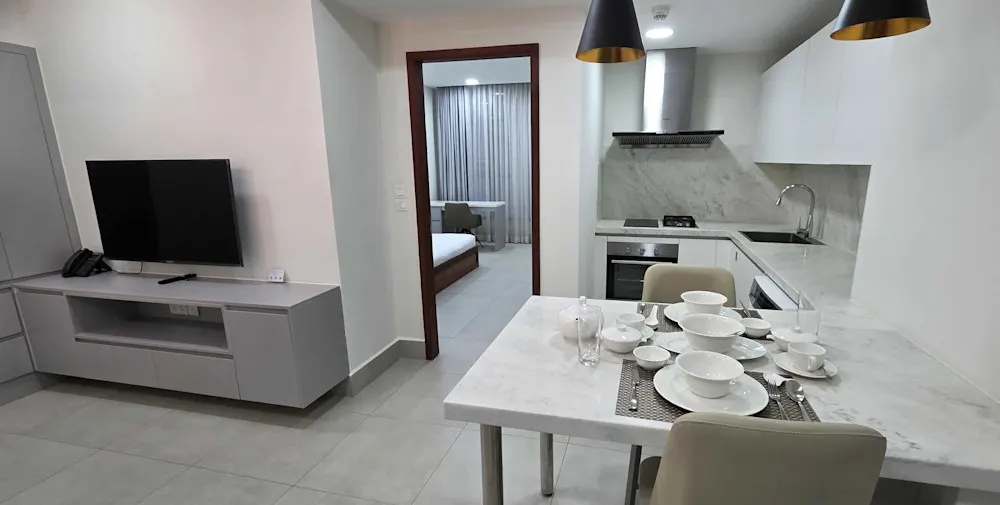
We toured several one-bedroom apartments, ranging from posh and polished in BKK1 to old and spacious, with tons of character in Toul Tom Poung. If I had to move to Phnom Penh tomorrow, I’d choose the immaculate one-bedroom unit at Richardson’s Serviced Apartments in BKK1. The white marble floors, sparkling rooftop pool, and fully equipped gym were available for a mere $650 per month, with only one month's security deposit required. The city view from this building is spectacular.
The most surprising takeaway I got from my brief property tour was how small Phnom Penh is compared to other Southeast Asian capitals. The city branches out westward from the riverside, but the area that most expats would consider living in is relatively compact. Since getting around is inexpensive and easy, a person can live in an affordable area while still reaching the more upscale parts of town quickly. Toul Tom Poung, BKK2, and Tonle Bassac are neighborhoods worth consideration for expats on a tighter budget.
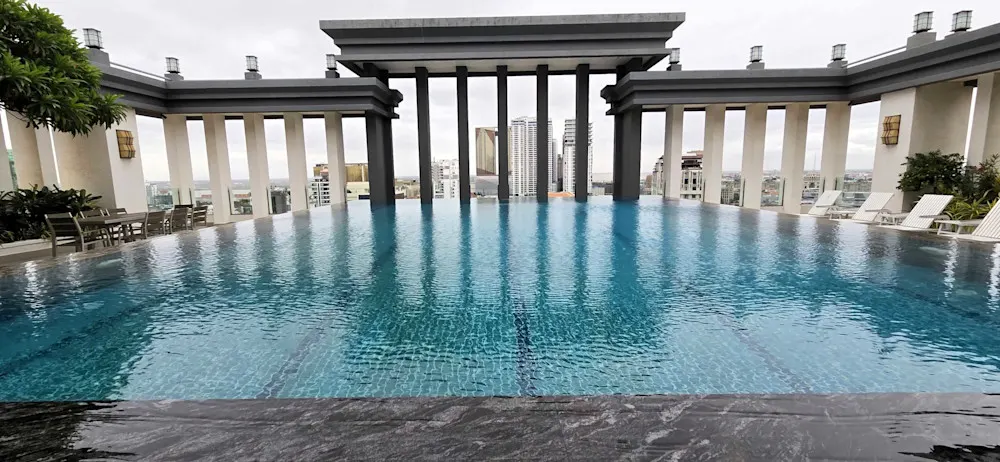
Cost of Living
After investigating a wide range of condos and apartments, I had a good idea of how much housing, the most significant component of my monthly expenses, would cost. Next, I focused on the second-largest slice of the cost-of-living pie: food.
Since I enjoy cooking at home, I visited several local grocery store chains available in the city. The top three choices in my estimation are:
Lucky Supermarket - Hong Kong-owned Western-style grocery with over 10,000 outlets all over Asia.
Aeon- A Japanese-owned Hypermarket similar to Walmart Superstores, with huge outlets located in Aeon shopping malls.
Super Duper Supermarket - A Canadian-owned Western-style grocery store open 24 hours, mainly featuring Australian and American products.
Where I live in Thailand, many expats (including myself) use local open-air markets to shop for a significant portion of their groceries. It would take some time for me to get comfortable with similar markets in Cambodia, as the hygiene in those I saw was not quite up to snuff.
The monthly cost for one person who mainly cooks at home with high-quality products would be similar to that in Thailand, at about $300. Couples could make it on $450. The only item that is significantly less expensive in Cambodia compared to Thailand is alcohol. Local beers (which are pretty good, by the way) are $0.60 at the grocery store. The duty on imported wine and spirits is the lowest in Asia. I enjoyed some excellent Australian and New Zealand wines that would have cost twice as much in the US (and five times as much in Thailand).
Dining out can be as cheap or as expensive as your mood and tastes dictate. For example, I had a delicious smoked chicken wrap with avocado and Caesar dressing for $7.25 at Le Cafe at the White Mansion. Just down the street, at this Khmer chicken joint, I had a big portion of fried chicken feet (don’t judge me until you’ve tried it) and a cold beer for $1.50.
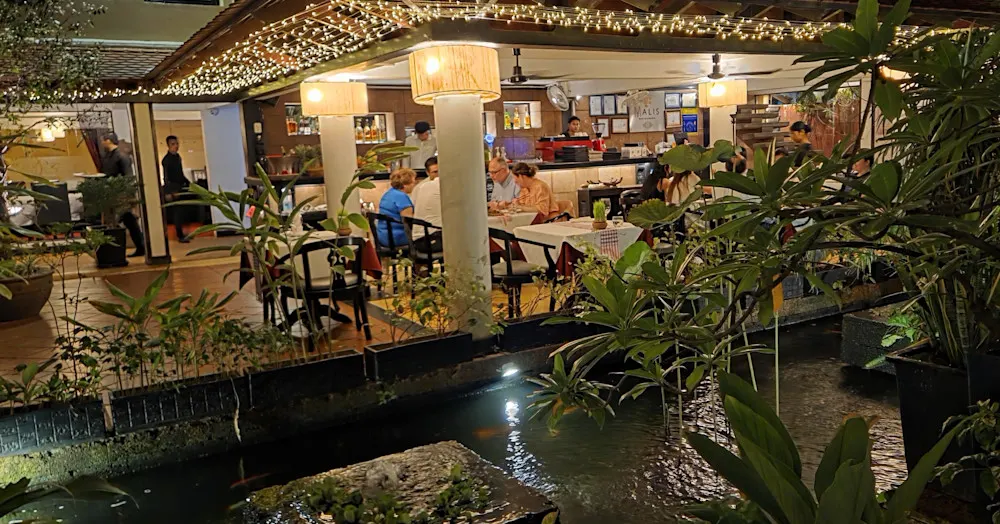
The most upscale place I dined was at a famous Cambodian restaurant near the Independence Monument called Malis. It’s set in a cool old Khmer house with a serene garden and lotus pond, creating a very Zen atmosphere. I enjoyed an appetizer of pan-seared scallops with green peppercorns, as well as a classic Khmer main course, Amok Fish, which is steamed in banana leaves. Both dishes were paired with a crisp and clean New Zealand Sauvignon Blanc. The total bill was $57. It's expensive by Cambodian standards, but it's a worthwhile culinary experience.
Since work permits are a breeze, and businesses are easy to open, you’ll find just about every cuisine represented in Phnom Penh, with enthusiastic expats realizing their dream of owning and operating a restaurant. Greek, Italian, German, Indian, and even Cuban … Eating out can be a diverse and affordable adventure.
The cost of electricity is $0.25 per kilowatt-hour, comparable to that in New York City and Los Angeles in the US. The only caveat is that Phnom Penh is hotter than Miami, so cooling your house could get expensive. Pay attention to which way your large windows face and how new the air conditioning unit is.
I wouldn’t want to own a car or drive in Phnom Penh, and zipping around town getting hot and sweaty on a motorbike isn’t desirable either … especially when you can get anywhere you want to go in comfort for pocket change. If you spend more than $100 per month on transportation, you’re probably making a lot of trips to the airport.
According to my calculations, a single person can live a vibrant, healthy, and interesting lifestyle in Phnom Penh for $2,000 per month. A couple could do the same for $2,500.
Livability

If you can’t embrace the hubbub and hustle of city life, you won’t like Phnom Penh for everyday living. But if you’re like me and have enjoyed the Asian urban experience before, this place is big enough to stay interesting yet small enough to get comfortable in. The warm and friendly people definitely make it a city that “grows on you.”
The most charming part about Phnom Penh is that it isn’t a place that tears down the old just to put up the new, so culture and history aren’t sacrificed for progress. Landmarks like The White Mansion and the old Foreign Correspondents' Club receive facelifts and are reborn for everyone to enjoy, alongside all the shiny new additions to the skyline.
For young or middle-aged digital nomads, Phnom Penh is perfect. For expat dreamers who want to start a second career, no place makes it easier. And for retirees who want to break out of their comfort zone, it’s a great place to start.
See you in the Kingdom of Wonder!
The World’s Best Retirement Havens for 2026
The World’s Best Retirement Havens for 2026
24 Countries Compared, Contrasted, Ranked, and Rated. You don’t have to be rich to enjoy a pampered retirement, you just need to know where to go. With our 35th Annual Global Retirement Index, our experts hand you a detailed roadmap. Details—and a Special Offer—Here

By submitting your email address, you will receive a free subscription to IL Postcards, Overseas Dream Home, The Untourist Daily and special offers from International Living and our affiliates. You can unsubscribe at any time, and we encourage you to read more about our Privacy Policy.
